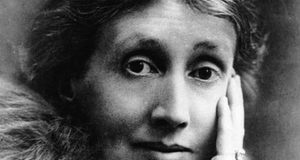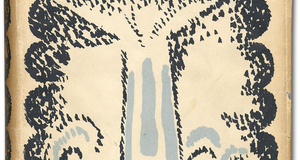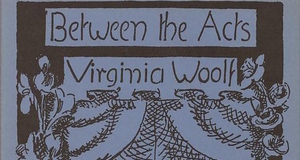Exploring "The Still Place that Lies About the Heart of Things:"Visibility for Women in the Works of George Eliot and Virginia Woolf
By
2014, Vol. 6 No. 04 | pg. 3/3 | « Some of the methods Eliot has used to reveal the truth-shaping nature of the subjective are unconventional and even supernatural. Critics have struggled with this and labeled some of her characters as “unreliable” or unbelievable as a result. For instance, in Eliot’s The Lifted Veil, the main character, Latimer, experiences a sort of “double consciousness.” There is a disparity between what he perceives and visualizes and the concrete physical world around him. Many critics have struggled with the novella because of its supernatural themes and their desire to find the common truths present in Eliot’s other works. However, I will argue here that Latimer still acts as a character whose subjectivity is truth-shaping. Despite the fact that this is Eliot’s most sensationalist and non-realist work, it still highlights the significance of the private life. In fact, Latimer’s double consciousness shows how the private life works in a way that is progressive, albeit in a complicated way. Herbert Spencer said that this state of the mind is a “’sympathy’ necessary to social evolution, but which can slip all too easily into the spiritual, ecstatic, or visionary passion characteristic of hysteria wherever it is unregulated by a restraining will” (Wood, 165). Latimer worries about his own mental health while experiencing double consciousness, but it is clear to readers that this state of mind has much more important implications regarding truth. Readers can see this in Latimer’s two perceptions of Bertha: one is gained through tangible experience, and the other he develops internally and clairvoyantly: “Behind the slim girl Bertha, whose words and looks I watched for, whose touch was bliss, there stood continually that Bertha with the fuller form, the harder eyes, the more rigid mouth,- with the barren selfish soul laid bare; no longer a fascinating secret, but a measured fact, urging itself perpetually on my unwilling sight. Are you unable to give me your sympathy- you who read this? Are you unable to imagine this double consciousness at work within me, flowing on like two parallel streams that never mingle their waters and blend into a common hue?” (21) Although Latimer agonizes over the disparity between the tangible perception of Bertha and the one materializing in his mind, this double-consciousness reveals the role of his subjectivity in shaping truth. The Bertha standing in front of Latimer is thin and attractive, but Latimer’s consciousness reveals her true selfish and rigid form - both in the sense that she is ugly at heart and will eventually develop into a physical form that reflects this. Latimer has trouble reconciling these two perceptions, but we know that his double-consciousness reveals his subjectivity as truth. Subsequently, the disparity between Bertha’s external appearance and Latimer’s more accurate internal perception of her illustrates the unreliability of external experience. Another place in The Lifted Veil where critics question Latimer’s subjectivity and the truthfulness of Eliot’s novella is the supernatural and bizarre blood transfusion scene. Terry Eagleton confronts this scene with the following commentary: “The blood transfusion incident is a piece of tawdry melodrama, a grotesque and infelicitous flaw, a fiction…. We can’t believe it; and yet of course we must, for this is a ‘realist’ tale, and within those conventions what Latimer as observer says goes” (qtd. in Flint, 462). Kate Flint points out the underdevelopment in Eagleton’s thinking here:“Eagleton wriggles out of this problem by suggesting that here we have nothing less than the theoretical problem of realist fiction to ponder upon: how do we know that what Latimer writes is ‘truth’… except by recourse to an explanation that reads into his specific situation a paradigm for the fact that all narrative fiction must pretend ‘not to know,’ to some extent, in order to function as a narrative?” (462). Further, Eagleton is concerned with the credibility of the blood transfusion as an external experience; otherwise she would not have pointed out its melodramatic and fictitious nature. He seems to be missing Eliot’s argument in regards to what creates truth. Since Eliot’s quest for truth depends on the internal experience, it is clear that she asking the reader to focus on the truthfulness of the subjective as a reaction to external experience. Thus, focusing on the blood transfusion scene’s fantastical qualities is fruitless. Readers should instead examine the scene’s implications for Latimer’s internal confusions – the revelation of Bertha’s murderous intentions confirms Latimer’s double-consciousness induced doubts about her. This points to a credibility in Latimer’s thinking that proves its truthfulness over his external experience. Some may question whether Eliot’s use of a male narrator helps achieve the uncovering of women’s histories and writing of the novel as historical artifact. Despite the fact that Latimer is a male, he possesses characteristics that prevent him from fitting the mold of masculinity and subsequently cause him to face the same ostracization to which women have historically been subject. Early in the novel, Latimer reveals that he has always been sensitive and shy, especially in his childhood. He says that he had always identified closely with his mother, who passed away when he was young. His “feminine” characteristics were in sharp contrast to his father and brother: [My father] was a firm, unbending, intensely orderly man… one of those people who are always like themselves from day to day, who are uninfluenced by the weather, and neither know melancholy nor high spirits. I held him in great awe, and appeared more timid and sensitive in his presence than at other times; a circumstance which, perhaps, helped to confirm him in the intention to educate me on a different plan from the prescriptive one with which he had complied in the case of my elder brother, already a tall youth at Eton (4). Not only does Latimer’s sensitivity cause him to be the proverbial black sheep of the family, but it also arouses suspicion about his mental stability. In fact, his father hires a phrenologist (Mr. Letherall) to inspect Latimer for “deficiencies” which, much to Latimer’s chagrin, Mr. Letherall finds. Latimer’s credibility and stability, then, are called into question even before he experiences double consciousness. This happens as a result of the “feminine” characteristics he possesses. Latimer’s gender is performed not through his biological sex, but through his interactions and emotional characteristics. This reflects Kathy Mezei’s arguments in her work Ambiguous Discourse: Feminist Narratology and British Women Writers. Mezei, building off of Judith Butler’s arguments that gender is entirely separate from biological sex, asserts that “Although a narrator may exhibit gender-marked features of discourse, gender in narrators, unlike in characters and focalizers, is rarely embodied and remains discourse-based” (71). Latimer’s role as narrator gives us direct access to his subjective experiences, which not only act as creators of truth, but also provide insight to his gender identity. His sensitivity causes those around him (whose paradigms are firmly rooted in patriarchal ideals) to believe that there is something “wrong” with him. Consequently, the reader can deduce that although Latimer is a male character, he still represents femininity and society’s condemnation of it. In short, Latimer is the antithesis of the patriarchy. Since Eliot ultimately writes Latimer’s subjectivity as the sole creator of truth in the novel, she is reveals that which Booth has called attention to: that the experiences of those who do not fit within patriarchal ideals actually hold great significance and authenticity. This means that the feminist political agenda forwarded through writing novels as historical artifacts transcends women’s experiences and extends to all who have been left out by biased patriarchal writers of history. Woolf uses individual experience as creator of truth, and her novels should be read more as artifacts of human experience rather than as merely fiction. Virginia Woolf is also a champion of the everyday, private experience, albeit in a less religiously devoted sort of way. Cox cites the example of an instance of inward experience with the character Mrs. Ramsay in Woolf’s To the Lighthouse: “’Here, she felt, putting down the spoon, here was the still place that lies about the heart of things’” (105). Cox is critical of Woolf’s employment of the subjective here, claiming that “The reference to the spoon enables the reader to remain detached from Mrs. Ramsay, to feel that he is not required to endorse the importance of her experience in anything more than a qualified way” (105). However, Cox misreads this scene. He believes that the reference to such an ordinary experience undermines the profundity of Mrs. Ramsay’s thoughts at that moment. However, the opposite is true. Woolf is juxtaposing what seems to be a commonplace external occurrence with a profound internal occurrence in a way that makes the two inseparable. In one fluid motion Mrs. Ramsay puts down the spoon and decides that she finds peace and meaning while doing so. This is direct evidence of the fact that Woolf uses individual experience as creator of truth, and that her novels should be read more as artifacts of human experience rather than merely fiction. Woolf may not gaze worshipfully at such an instance of tranquil subjectivity as does Eliot, but it is still clear that she is an expert at exposing the way in which such a quiet, private, and emotional experience creates reality and meaning. Woolf’s treatment of narrative structure also places lived experience as the crux of reality-shaping. Cox addresses this when citing M.C. Bradbrook, who criticizes the lack of Aristotelian plot structure in Woolf’s work. Woolf’s novels do not include a beginning, middle (development of crisis), and end (resolution) because, as Bradbrook asserts: “She has no definite belief that people are progressing towards either happiness or misery, for she is uncertain where these are to be found. Because of this lack of dramatic development, her characters become depersonalized, like sensations in a void. We do not see them changing and developing as they come into contact with new experiences. Instead of precise definition of character, we have only moods and reverie” (105-106). While Bradbrook is critical of such an uncertain narrative strategy, the chaotic nature of Woolf’s writing is actually what makes it a brilliant reflection of true-to-life, individual experience. Every human being sometimes progresses towards happiness, sometimes progresses towards misery, and sometimes falls in the middle of that spectrum, or finds him or herself in multiple emotional places simultaneously. Rather than following the linear path of Aristotelian plot structure, the course of lived experience is actually rather tumultuous. Employment of Aristotelian plot structure suggests that reality is defined externally, according to a linear progression of emotion and narrative action. Woolf’s avoidance of such linearity is evidence that meaning for her is shaped by the chaos of lived experience. In this way, she pushes for a more authentic mode of writing that allows her to more realistically capture women’s lived experiences, thus creating literature that can serve as historical artifact. The character development of Clarissa Dalloway is also an important refutation to Bradbrook’s assertion that Woolf’s characters are flat as a result of her chaotic narrative form. Because the novel follows such a stream-of-consciousness model, we see Clarissa’s ever-changing thoughts and emotions and, subsequently, the depth of her character. At the beginning of the novel we learn this about Clarissa: “She felt very young; at the same time unspeakably aged. She sliced like a knife through everything; at the same time was outside, looking on.” (8) We only begin to reach an understanding of these multitudes in Clarissa as we follow her thoughts and interactions throughout the day. Her existence seems to be a series of reflections and observations on her subjective experiences of past and present. Because we have such access to those perspectives, it’s as if Clarissa’s entire life is laid out for us over the course of the single day in which the novel takes place. This is what makes Clarissa such a realistic character. So in arguing that a non-Aristotelian plot structure causes Woolf’s characters to be depersonalized, Bradbrook greatly overlooks the way it allows Woolf to reveal very human multitudes in her characters. Eliot and Woolf’s treatment of the novel as historical artifact provides an important lesson to readers. Prior to feminism’s second wave, women’s experiences were ignored almost completely by historians and seldom discussed in other social and political realms. It is safe to say that women’s relegation to the private sphere caused them to be regarded as second-class citizens, or not regarded at all. Although the second wave of feminism did not happen until the 1960s, it is important to acknowledge that the works of authors like Eliot and Woolf set a precedent for the achievements that would be accomplished in the century that followed theirs. Feminist literature leading up to the second wave provided visibility for women that allowed the social momentum necessary for the feminist movement to progress. By reading this literature as historical artifacts that reveal the significance of women’s private lives, readers can gain insight as to how progress has been achieved, and the paradigms that must be expanded on in order to achieve continued success for the feminist movement. ReferencesAllen, James Sloan. ""Mrs. Dalloway and the Ethics of Civility"."Sewanee Review. 107.4 (1999): 586-594. Print. Booth, Allison. Greatness Engendered: George Eliot and Virginia Woolf. Ithaca and London: Cornell University Press, 1992. Print. Cox, C.B. The Free Spirit: A Study of Liberal Humanism in the Novels of George Eliot, Henry James, E.M. Forster, Virginia Woolf, and Angus Wilson. New York and Toronto: Oxford University Press, 1963. 13-37, 103-116. Print. Eliot, George.The Lifted Veil. 1859. New York: Oxford University Press, 1999. Print. Flint, Kate. "Blood, Bodies, and The Lifted Veil."Nineteenth-Century Literature. 51.4 (1997): 455-473. Web. 13 Dec. 2012. Mezei, Kathy. Ambiguous Discourse: Feminist Narratology and British Women Writers. The University of North Carolina Press, 1996. Print. Montashery, Iraj. "A Multidisciplinary Approach for the Construction of Subjectivity in Virginia Woolf's Mrs. Dalloway."Advances in Asian Social Science. 1.3 (2012): 293-300. Print. Rachman, Shalom. "Clarissa's Attic: Virginia Woolf's Mrs. Dalloway Reconstructed."Twentieth Century Literature. 18.1 (1972): 3-18. Web. 8 Dec. 2013. Smith, Susan Bennett. "Reinventing Grief Work: Virginia Woolf's Feminist Representations of Mourning in Mrs. Dalloway and To the Lighthouse."Twentieth Century Literature. 41.4 (1995): 310-327. Web. 8 Dec. 2013. Wood, Jane. Passion and Pathology in Victorian Fiction. Oxford University Press, 2001. Print. Woolf, Virginia. George Eliot. The Times Literary Supplement, 20th November 1919. Print. http://digital.library.upenn.edu/women/woolf/VW-Eliot.html Woolf, Virginia. Mrs. Dalloway. New York: Harcourt, Brace and Co, 1925. Print. Suggested Reading from Inquiries Journal
Inquiries Journal provides undergraduate and graduate students around the world a platform for the wide dissemination of academic work over a range of core disciplines. Representing the work of students from hundreds of institutions around the globe, Inquiries Journal's large database of academic articles is completely free. Learn more | Blog | Submit Latest in Literature |


















